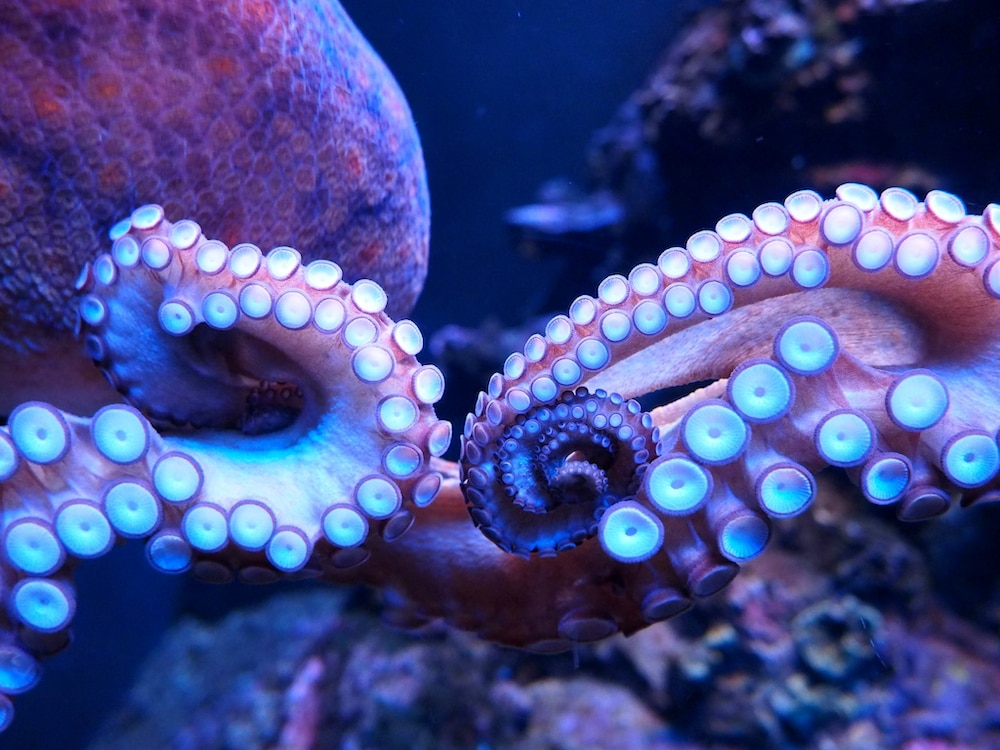Create a free profile to get unlimited access to exclusive videos, sweepstakes, and more!
Octopus-inspired gloves turn your fingers into tentacles
From ten fingers to tentacles.

In the 2009 monster film Mega Shark Versus Giant Octopus (now streaming on Peacock!) scientists encounter the titular giant animals when they are accidentally released from their frozen prison inside of a glacier. What ensues is an epic battle between two of nature’s most formidable animals, oversized as they may be. The pair seems evenly matched, the shark with its deadly jaws and the octopus with its grappling tentacles, and they eventually — spoiler alert — drag one another into the inky depths of the ocean floor. While the movie gives the shark a fair shot, we have to believe that pound for pound, an octopus would win in a fair fight. There’s just no beating eight arms covered in thousands of suckers.
Even octopodes of ordinary size are capable of achieving incredible grip and dexterity underwater, an environment which historically doesn’t lend itself well to adhesion. Scientists in Michael Bartlett’s Soft Materials and Structures Lab at Virginia Tech — the same lab that brought us transformable robots — looked to the octopus for inspiration in building a wearable which transforms a user’s fingers into their very own tentacles. Their results were published in the journal Science Advances.
“The octopus has eight arms, two thousand suckers, and millions of sensors. It relies on all of those components to do what it does, taking those signals and processing them in neurons across its body. An octopus can individually control those two thousand adhesives, while I have trouble thinking about 10 digits. The scale of control is really astonishing and led us down the path of wondering how we can take the first steps toward that,” Bartlett told SYFY WIRE.
In place of the octopuses thousands of suckers the new adhesive glove from Virginia Tech, dubbed the Octa-Glove, has only five, but it still manages an impressive level of adhesion underwater. A sucker at the tip of each finger is comprised of two primary components. The adhesive stalk mimics the sucker of the octopus while a rubber membrane inside is controlled by internal pressure changes. When the membrane is inflated, the external stalk remains flat but when negative pressure is introduced, the membrane moves into the stalk, changing its shape and creating an adhesive interaction with an object or surface.
Importantly, the entire interaction is controlled without the user needing to manually activate it. The Octa-Glove turns the adhesion on when it comes into the proximity of a surface or object by way of sensors embedded just to the side of the suckers.
“We put a micro-LiDAR sensor next to the adhesives. When the sucker gets close enough to an object, we send a signal to a solenoid valve which opens or closes the pressure to the membrane. The advantage is we can turn adhesion on and off in 50 milliseconds. All a user has to do is come near a surface and the glove takes care of the rest. It automatically turns on, it automatically attaches, and can automatically release,” Bartlett said.
At present, the release mechanism is controlled via programming. In laboratory testing, the glove was programmed to release an object after a set amount of time, but the team is investigating other mechanisms which would give users a greater level of control. Potential control mechanisms under investigation are an additional button which would allow for manual release as well as voice control. Depending on the use case, the glove could also be designed to automatically detach from objects after they are removed from the water. The team is also investigating ways for the glove to deliver increased tactile feedback to the user.
“When the researchers were using it, they would press on an object and feel the glove activate. We could also include haptics or tactile vibration sensors that could inform the user. We have the flexibility to incorporate any type of feedback, which I think will matter as we go forward,” Bartlett said.
Future versions of the Octa-Glove will also likely include additional suckers. In nature, the octopus has the entire underside of its eight arms covered in suckers and researchers in the Soft Materials and Structures Lab think there’s an opportunity to move their device closer to that sort of model. The next iteration could have additional suckers on the fingers, the palm, or even down the entire length of the arm.
Bartlett has been working on adhesion technologies for more than a decade and saw a particular challenge in designing switchable adhesives — those which can be turned on and off quickly — for use underwater. The Octa-Glove certainly meets that challenge, but its potential applications extend beyond the watery domain onto land and even into our homes.
“I like to think of this work as more than just a single adhesive. There’s a broader idea of how we can attach to and release from objects without the user having to think much about it which could be really impactful. There are possibilities for rehabilitation or assistive devices where you have a user who can’t quite grasp something, or they don’t know when they’re grasping. We’re exploring how we can impart some of the capabilities we see in nature to those assistive devices,” Bartlett said.
There’s a future in which people have access to octopus-level grip at their fingertips and the potential for these kinds of bio-inspired technologies likely run deeper than we can fathom.



























